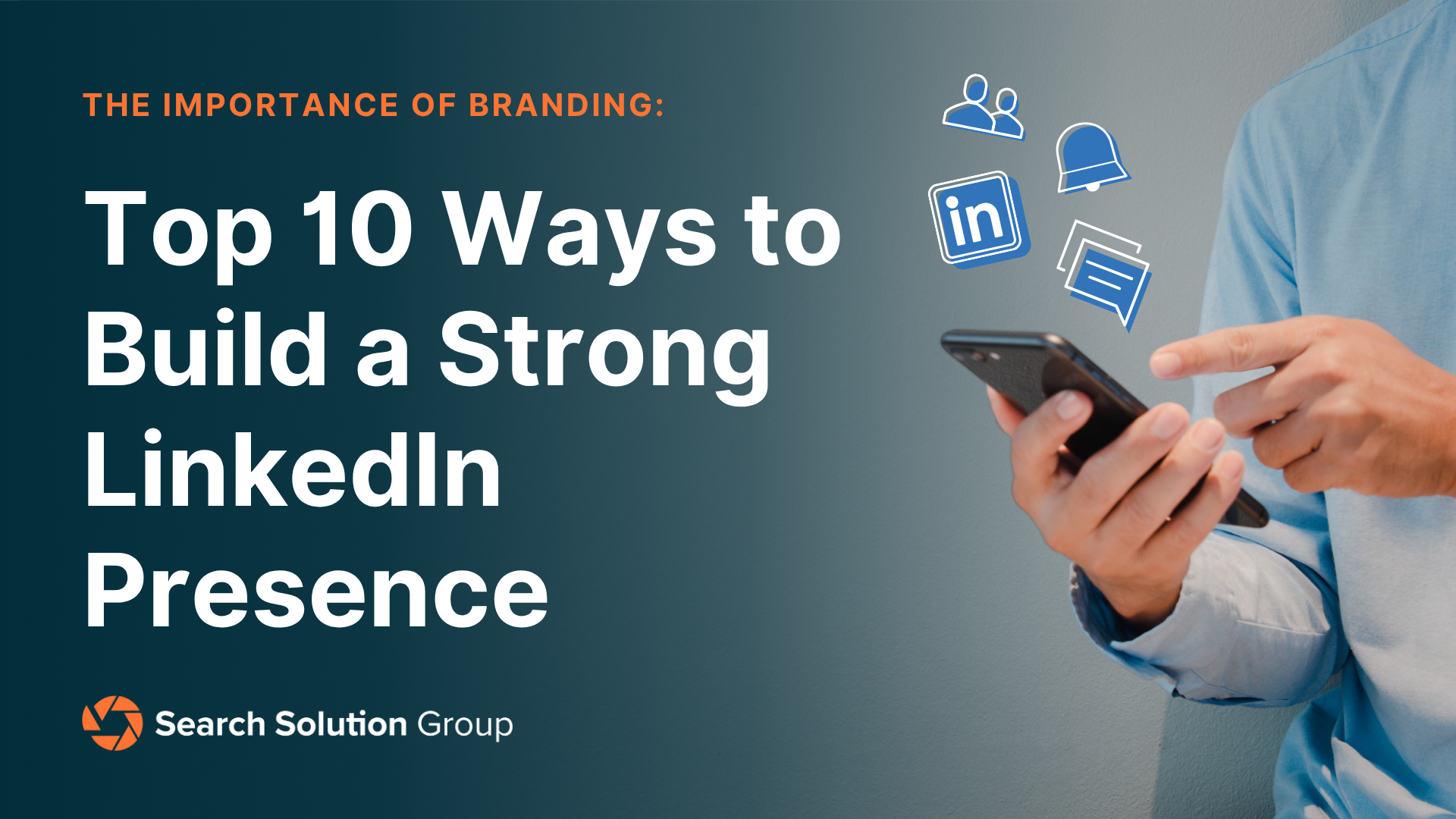In recognition of National Mental Health Awareness Month, we’re spotlighting the critical importance of mental health in enhancing workplace productivity and fostering an inclusive, supportive work environment. As the backbone of organizational culture, Human Resources professionals play a crucial role in shaping a workplace that prioritizes the mental wellness of its employees. This blog outlines five comprehensive strategies business leaders, HR professionals, and hiring managers can follow to integrate mental health initiatives into their business and HR strategies. Organizations can benefit from a healthier, more engaged workforce by integrating these mental health initiatives into their business and HR strategies.
1. Better Hiring Practices
Effective hiring practices are foundational in creating a resilient and well-matched workforce. From the beginning, transparency about a company’s culture, expectations, and work ethic attracts exemplary candidates and sets the stage for long-term success and satisfaction. This transparency is crucial in preventing the misalignment that can lead to job dissatisfaction and mental health issues down the line.
When considering companies like SpaceX, whose demands include long work hours and high commitment, being clear about these expectations during the hiring process helps attract individuals who thrive in such environments. On the other hand, a company like Google emphasizes a culture of work-life balance, attracting candidates who prioritize flexibility and personal time. This distinction in company cultures and the clarity provided during the hiring phase can significantly impact employee morale and mental well-being from the very start.
Consider these strategies to clarify company culture and expectations during hiring.
- Develop a Clear Employer Branding Message: Use your company’s career page, social media profiles, and job postings to communicate your organization’s core values and culture. This messaging should reflect the reality of working at your company and the type of work environment candidates can expect.
- Behavioral and Situational Interviewing: Incorporate questions and scenarios in interviews that help assess whether a candidate’s values and behavior align with the company culture. This can include questions about handling work-related stress, teamwork, and work-life balance.
- Realistic Job Previews: Give candidates a real taste of their day-to-day life. This could be through job trials, shadowing, or detailed case studies of current projects. A realistic job preview helps potential employees better understand what will be expected of them and reduces the risk of future job dissatisfaction.
- Incorporate Employee Testimonials: Share insights from current employees about the work environment and culture through various mediums like videos or written testimonials. This gives candidates authentic perspectives and sets accurate expectations.
- Feedback from Existing Employees: Regularly gather and analyze feedback from current employees about their job expectations versus reality. Use this data to continually refine how job roles and company culture are communicated to potential hires.
By focusing on these areas, HR professionals can significantly improve how well new hires fit their roles and adapt to the company culture. Better alignment from the outset enhances job satisfaction and performance and supports the overall mental health of employees and company culture by reducing stress and anxiety associated with unclear or misaligned job expectations.
2. Conducting Employee Surveys
Regular, anonymous employee surveys are imperative tools for HR departments to effectively monitor and assess the mental health atmosphere and overall company culture within the organization. Surveys crafted to uncover overt stressors and subtle indicators of workplace challenges can provide deep insights into employee well-being.
Effective Survey Question Examples:
- How would you rate your current level of job satisfaction on a scale of 1-10?
- How often do you feel stressed at work?
- Do you believe your workload is manageable?
- Are you aware of the mental health resources available to you?
- How supported do you feel by management when addressing work-related concerns?
For a more comprehensive understanding of employee well-being, consider exploring these and 50 other insightful questions. Check out the full list here to enhance your workplace surveys.
Analyzing and Acting on Survey Data:
- Data Analysis: Segment the data by department or role to pinpoint specific areas of concern. Utilize statistical analysis to identify trends and evaluate the impact of changes over time.
- Developing Strategies: Based on survey insights, create targeted interventions, such as improving support structures or offering professional growth opportunities. Implement and monitor changes, adjusting strategies based on ongoing feedback and new survey results.
- Feedback and Improvement: Communicate findings and intended actions to employees to maintain transparency and trust. Continuously refine surveys based on feedback to ensure they remain relevant and effective in capturing the necessary data to improve workplace mental health.
Through well-structured surveys and committed follow-through, HR can tackle the root causes of workplace stress, enhancing the mental health environment and overall employee satisfaction and productivity.
3. Organizing Team-Building Events
Team-building events are more than just opportunities for socializing; they play a vital role in cultivating trust, facilitating open communication, and nurturing a supportive community within the workplace. These events help break down barriers among team members and significantly enhance collective problem-solving capabilities and interpersonal understanding. Additionally, they contribute to improved mental health by reducing feelings of isolation, increasing job satisfaction, and bolstering a sense of belonging and morale among employees.
Creative Ideas for Team-Building Activities:
- Collaborative Problem-Solving Challenges: Organize activities where teams must work together to solve puzzles or complete projects.
- Wellness Workshops: Offer sessions focusing on physical and mental health, such as yoga classes, meditation sessions, or workshops on stress management and resilience.
- Social Outings: Plan group outings, such as retreats, sporting events, team lunches, or cultural outings like museum visits, which can help employees connect on a more personal level outside of the work environment.
These activities can profoundly impact mental health by reducing feelings of isolation and boosting morale. By engaging in fun and challenging activities together, employees can forge stronger bonds and feel more integrated into their team, increasing job satisfaction and engagement.
4. Enhancing Support Systems
A well-structured support system, including accessible mental health resources such as counseling services and Employee Assistance Programs (EAPs), is vital for a mentally healthy workplace. These resources provide employees with the tools to effectively handle personal and professional challenges.
Promoting Mental Health Services:
- Visibility and Accessibility: Ensure employees are aware of mental health resources by distributing information via newsletters, email updates, and during orientation. Regular announcements at company events also remind the team that support is readily available. It’s important that everyone knows help is just a conversation away.
- Confidentiality and Trust: Emphasize the confidentiality of these services to encourage more employees to take advantage of them without fear of stigma or repercussions.
- Regular Updates and Feedback: Keep your workforce informed about any updates or changes to these services and solicit feedback to improve their effectiveness and relevance.
By effectively promoting these support systems, HR can help create an environment where employees feel supported and valued, which is fundamental to maintaining a healthy workplace atmosphere.
5. Implementing Flexible Work Arrangements
Flexible work arrangements have become increasingly recognized in today’s workplace, especially those that support employees’ mental health. Flexible work schedules and remote work options can significantly alleviate stress and contribute to better overall job satisfaction.
Benefits and Implementation of Flexible Work Arrangements:
- Reduced Commuting Stress: Allowing employees to work from home part-time or full-time can significantly reduce the stress and time associated with commuting, providing a much-needed relief.
- Work-Life Balance: Flexible schedules enable employees to manage personal responsibilities, such as childcare or eldercare, more effectively, leading to less personal conflict and stress.
- Productivity and Engagement: Flexible working conditions can lead to higher productivity as employees work during hours when they feel most active and focused.
Implementing these arrangements requires clear guidelines to ensure that productivity remains high. This includes setting core hours when all team members are available for meetings, using project management tools to keep track of progress, and regular check-ins to ensure that employees feel supported and engaged. These measures are designed to provide a sense of structure and support, ensuring a smooth transition.
By embracing flexible work arrangements, companies can demonstrate a commitment to the well-being of their employees, which not only enhances mental health but also attracts and retains top talent.
Why Prioritize Mental Health
The strategies discussed in this blog are essential for building a workplace that prioritizes productivity and mental well-being. Improved hiring processes, insightful employee surveys, engaging team-building activities, strong support systems, and flexible work arrangements are crucial in creating an environment where employees can thrive.
We invite our clients and partners to reflect on their mental health initiatives and consider the benefits of enhancing these practices. If you see potential for improvement or need assistance integrating these practices, reach out to our team at Search Solution Group.
Let’s work together to make our workplaces healthier and more productive. By prioritizing mental health, we can create supportive environments that benefit both employees and the broader business objectives. Join us in this vital effort—your actions can drive meaningful organizational change.






